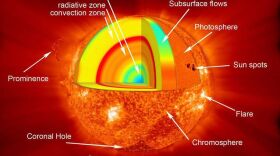The Perseid meteor shower has begun. While the best viewing typically occurs after midnight when your location faces forward into the meteor stream, this year’s full moon is bright enough to interfere with visibility. To get around this, it's best to start watching at dusk, before the moon rises. The Perseids are tiny bits of ice from comet Swift Tuttle, disintegrating as they enter Earth's atmosphere. About one in 20 meteors, however, is a background meteor from the asteroid belt, which can survive their fiery descent. These "sturdy" meteors can even crash through roofs at speeds of up to 250 miles per hour. Despite the rarity of such impacts, insurance usually covers the damage.

Play Live Radio
Next Up:
0:00
0:00
Available On Air Stations






